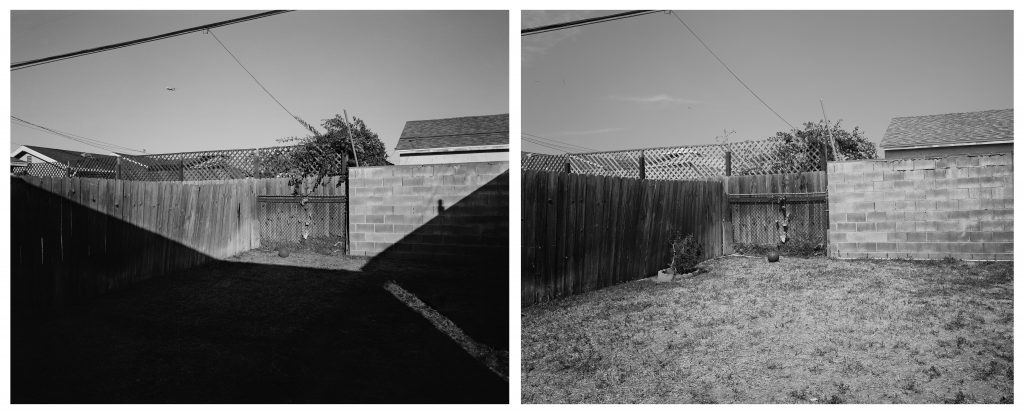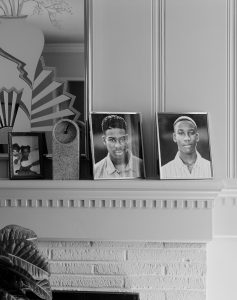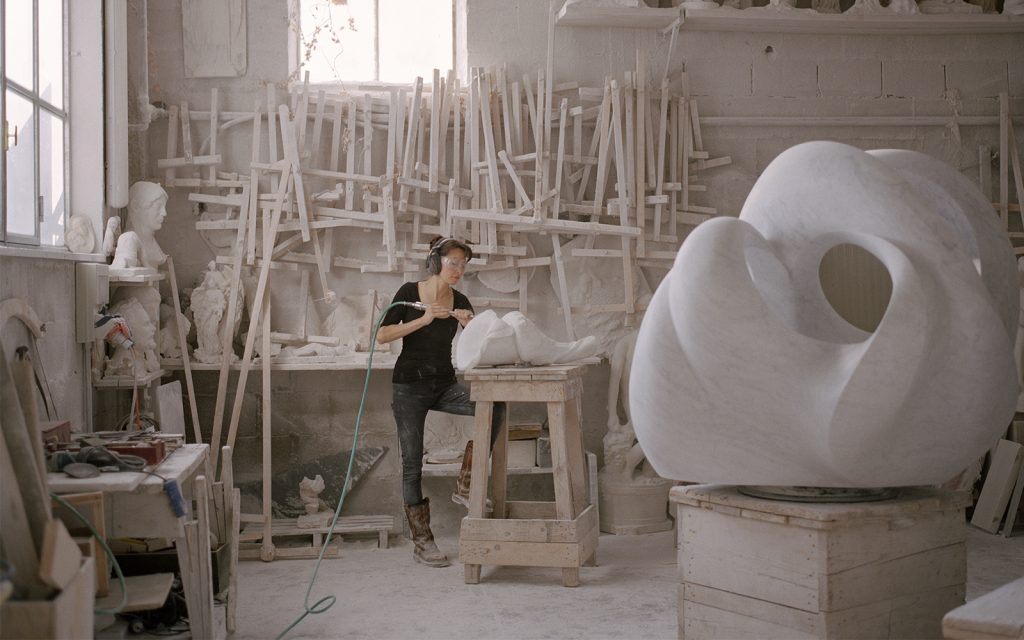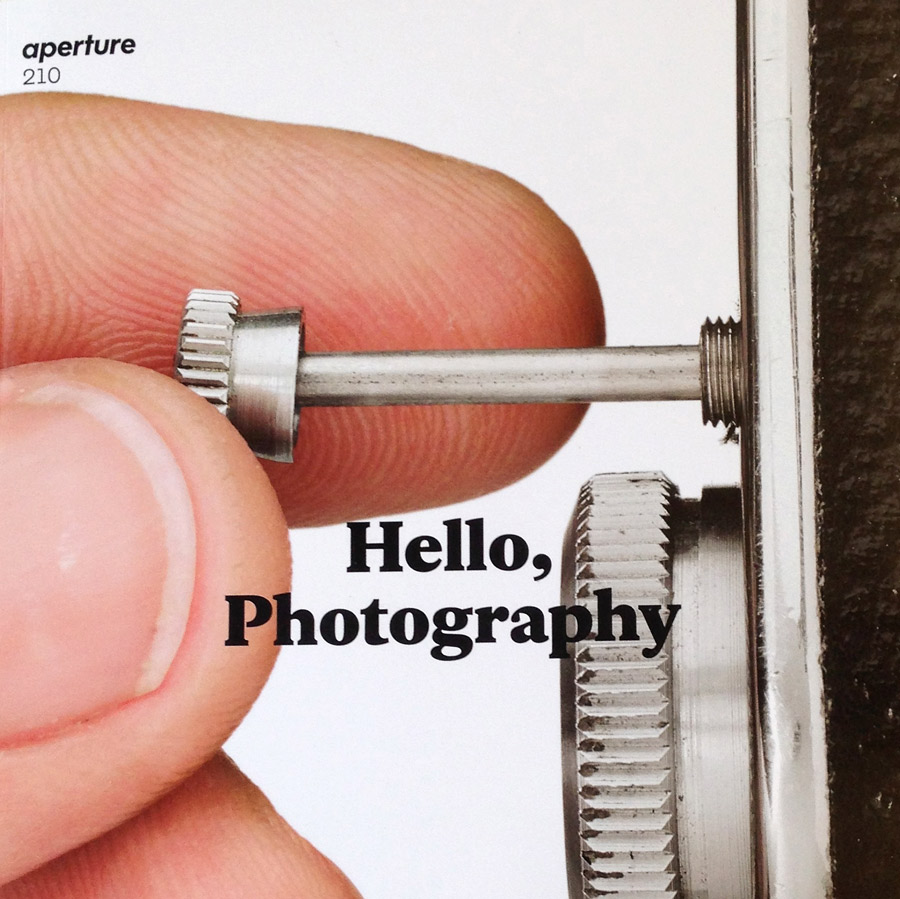Interview: Photographer Dannielle Bowman
The Brooklyn-based artist and educator’s ongoing work addresses home, memories and histories

On now (by appointment only) at Baxter St at the Camera Club of New York, Dannielle Bowman: 2020 Aperture Portfolio Prize Winner displays Dannielle Bowman‘s glorious series What Had Happened, photographs that explore a vast historical event with intimate, private scenes—a balancing act that’s achieved through delicate use of shadow, light, texture and tenderness. Essentially an exploration of home, What Had Happened draws inspiration from the Great Migration and began as Bowman’s desire to capture elements of her own history. At first making these black and white images at her family members’ homes in LA, she has since broadened her scope; tracing Black American histories by photographing other homes across the country, and even digging through her own archives—discovering that her desire to document these stories existed long before she embarked on the photo series.
Brooklyn-based Bowman—a photographer and educator—won Aperture’s 2020 Portfolio Prize for What Had Happened, and has been an artist-in-residence at Baxter St at the CCNY. We spoke with her about the endeavor to explore the concept of home, memory, shared experience, and who decides what has historical significance. Below is an abridged version of that conversation.

The title of this ongoing series plays a few roles: there’s the Black vernacular at play, plus the juxtaposition of the actual words—there’s not technically a lot happening in these images, but there’s so much to take in. Can you explain a little about the name and its overarching intention?
That title What Had Happened came after I started working on it—I usually don’t have that kind of foresight with my work. So that title, that is a Black American vernacular phrase—some people will recognize it. I’m really interested in language, and I’m really interested in speaking the same language, but in very different ways. And there are these micro-languages. What Had Happened, as opposed to referring to an event happening in my photographs, it’s doing this work of setting up the viewer (or at least someone who is familiar with that phrase) to understand that they’re about to be told a story. They’re about to be told some narrative or at least invited into a narrative.
But it also is referring specifically to the Great Migration, which was a huge inspiration for the work as a kind of ground zero or a catalyst or a jumping-off point. The other thing that I love about the phrase, is that I feel like, the nature of the phrase itself, it sets up a situation of infinite possibility. And I think that’s absolutely also what the Great Migration did, it set up a set of situations of infinite possibility.
The photographs convey so much, and while they are never stark, they certainly are spare. As you mention, they tie into and were inspired, in part at least, by the Great Migration, but the scenes are super-intimate. So it’s a vast and immense history that’s paired with very private and personal moments within homes and neighborhoods. How did you approach bridging that gap?

It’s a wonderful question, and something that I’m trying to figure out how to explain better. I knew that I wanted to make something that was inspired by the Great Migration. I’m thinking about my own personal history and my family’s history, but also thinking about this vast event that happened. So it was really a matter of like, “OK, I know I want to do this thing. I know I’m inspired by this thing, or I want to think about this thing. But now what am I gonna do?” I wasn’t planning on focusing on portraits of Black Baby Boomers, but that’s mostly just because I’m not the kind of photographer that works with one kind of image-making. I get bored fast, so it’s important to me to change what I’m doing. So I do portraits and I’ll maybe do a landscape and then something abstract and now I’m working with archival stuff. It’s all just kind of happening at the same time.
That being said, when I was in the position of “I have this idea and now I need to figure out how I’m actually going to execute it,” Black Baby Boomers presented themselves to me as a way to point to what I was talking about—kind of as a jumping-off point. So I started thinking about making photographs in and around the homes of Black Baby Boomers and wondering can I make photographs of the objects of Black Baby Boomers—people who were in some way directly touched by the Great Migration. Obviously I have been touched by the Great Migration, but these people—my grandfather, for example, moved from Denton, Texas to LA when he was 11 in 1955 or so. So I was thinking basically about photographing his peer group, as a way to try to speak toward the broader migration.

Were you looking for a thread that connected all these people and experiences?
Honestly, I am always driven by a way of looking at the world and events in history in a micro way. Then doing that, you create that push and pull. I think when you zoom in and really investigate and then zoom out and understand the bigger picture, there’s a lot more available—a lot more becomes available in that tension.
That zoom in / zoom out idea is apparent in several of your photographs—without being overwritten. Perhaps especially “Carpeted Stairs” and “Faces,” they’re warm and personal but with a kind of distant element that makes them look like artifacts. Can you tell us a little about that?

Remember the saying about how the victor decides history? Prior to this work, I was thinking around all of these questions about artifacts and museums and questioning why certain artifacts are more venerated than others, and wanting to actively choose not to find artifacts important that were being dictated to me as important by the powers that be. But I was photographing a lot of artifacts in museums, and as I was doing that, I was like, “Well, I’m kind of just perpetuating these images. What if I find my own museum? What would it look like to photograph in my museum?”
So I was thinking about that at the same time as thinking about the Migration. Then I started thinking about the homes that I grew up in—the homes of Black Baby Boomers—as museums in their own right, and then the objects within them as artifacts.
What is it about those homes that I feel so connected to, even when I have never been to them before?
Then I had this other question. Just based on the personal experience of going to a friend’s house or a friend’s grandmother’s house or another Black person and seeing, feeling how in this home that I’ve never been in before, I feel at home. What is it about the things that they have in their homes, the photographs of people, the general feeling, the smell of the home? What is it about those homes that I feel so connected to, even when I have never been to them before? So there was this overarching trying to understand how those broad connections happen.
This project, it’s not autobiographical, [but] the carpeted staircase picture and then the faces picture, those two pictures are photographs that I made in places that are significant to me… I think that I made them because I think that they were things that I have stared at a lot, and not really known why— just sort of been fascinated by them. So once I finally allowed myself to start making this work—to be inspired by my personal history and by my family history—it was really obvious to me, “Oh, I have to photograph the stairs in my uncle Larry’s house because I think about them all the time,” and “I have to photograph this mantle in this other house because I can see it so perfectly in my mind’s eye.” Other people who grew up in homes similar to me connect with them. It’s wild. There is something, there’s energy in the work—it’s a kind of intimacy and specificity that people can pick up on and that they can remember a call upon from their own lives.
They’re like universal memories, or slices of memories.
We remember the weirdest things. The pattern of the carpet or how it felt when your cousin pushed you down the stairs, the light hitting the dust in the corner when you landed—you remember all these odd little things. And yet, since we all have those kinds of sense memories, when I hone in on those for photographs, there’s something for everyone. I think that’s so amazing.

You leave a lot of space for viewers to engage and dig in; nothing is overwritten in your images. They’re intellectual without just being intellectual for the sake of it. Is that something you consider or even achieve during planning, shooting or after the fact?
It’s funny, I actually have to work really hard to not let the intellect take over. It’s a challenge… I’m a lot better now at working from feeling and emotion and visceral senses, but I have to work to get those things to come to the party. I think the intellectual side of the work is always there, it’s always a part of making the work just because it’s my natural sort of way of being.
Because of that, I don’t know that I have to plan it so much. It’s probably there when I’m thinking about what I want to photograph or what kind of feeling that I want to convey in a photograph, and while I’m photographing. It probably shows up in what I’m attracted to versus what I’m not attracted to. I try to balance the sensory experience of making pictures because I am like what they call an “out in the world” photographer (for lack of a better term) so a lot of it is just me being out in the world, trying to respond to things, think deeply or look closely at things. But yeah, the intellect is always around, she’s always around.
What was it like to rediscover your hometown as part of a photographic endeavor?

At this point it’s actually expanded well beyond LA; I’ve shot some on the East Coast now. And then I have incorporated some of my own archival photographs I made in Texas in 2012. It’s interesting though, I definitely did start the project really focused on LA and focused on areas that were super-familiar to me from childhood and it’s funny because I actually see it as less of a rediscovery and more of me finally allowing myself to obsess over things that I had always kind of obsessed over—like cracks in the sidewalk in front of my mom’s house or the way that the light hits the tree sap on the concrete in my grandfather’s backyard. The sort of things that you grab on to; very specific sensory memories of a place or of a time in your life.
I daydream a lot about these places and I always had, but didn’t think anything of it. I certainly didn’t think it would be worthwhile inspiration for my work. But it really has been. I’m glad that I gave myself the opportunity to crystallize all of those feelings and visions that I still have from childhood… Maybe just finally allowing myself the pleasure of photographing those spaces.
Dannielle Bowman: 2020 Aperture Portfolio Prize Winner is currently on view at Baxter St at CCNY (open Tuesday–Saturday from 12PM to 6PM by appointment) until 4 February 2021.
Hero image Dannielle Bowman “Mason’s Ring” 2020











